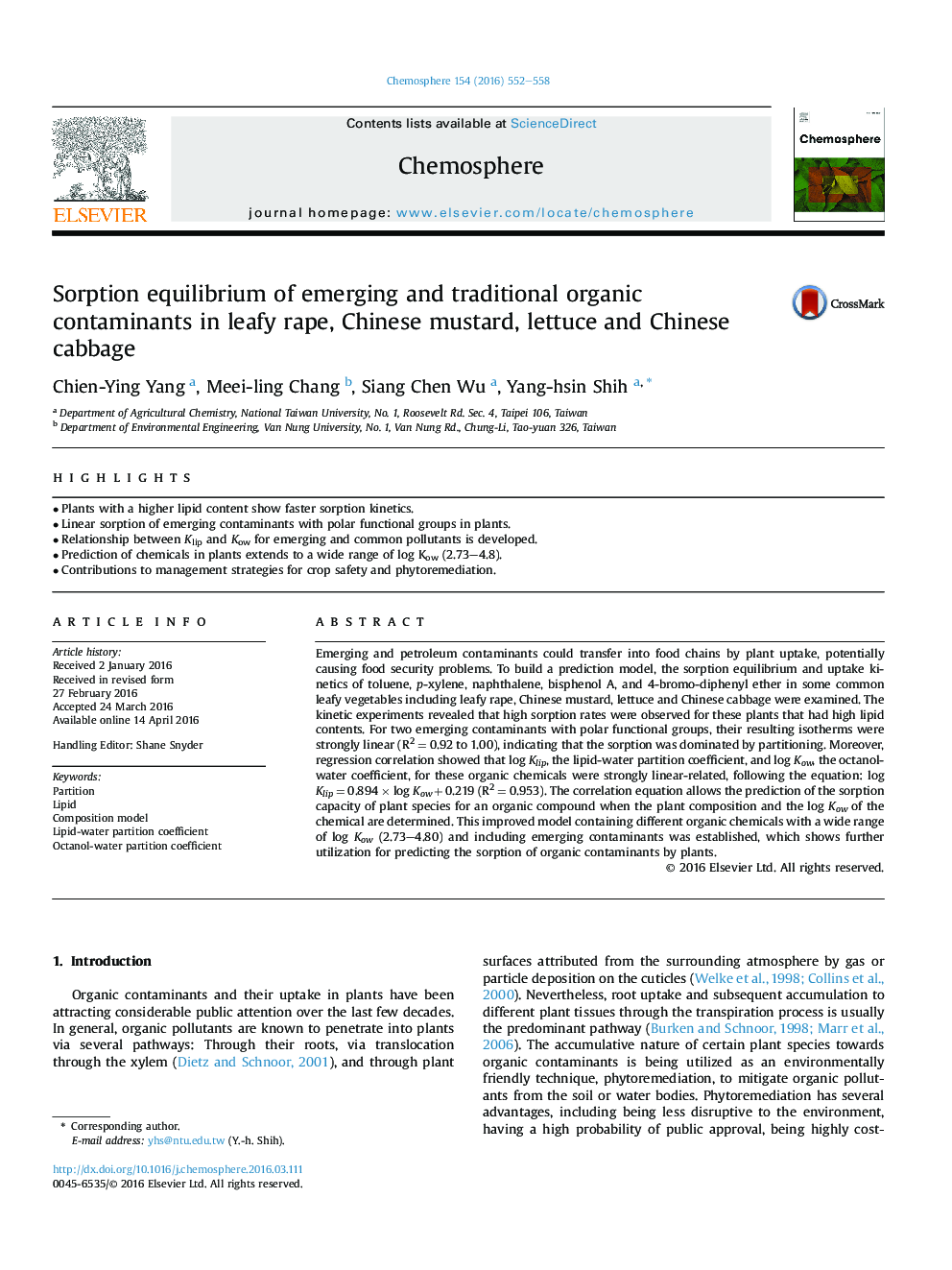| کد مقاله | کد نشریه | سال انتشار | مقاله انگلیسی | نسخه تمام متن |
|---|---|---|---|---|
| 6306745 | 1618817 | 2016 | 7 صفحه PDF | دانلود رایگان |
عنوان انگلیسی مقاله ISI
Sorption equilibrium of emerging and traditional organic contaminants in leafy rape, Chinese mustard, lettuce and Chinese cabbage
ترجمه فارسی عنوان
تعادل جذب آلاینده های آلی در حال ظهور و سنتی در برگ های برگ، خردل چینی، کاهو و کلم چینی
دانلود مقاله + سفارش ترجمه
دانلود مقاله ISI انگلیسی
رایگان برای ایرانیان
کلمات کلیدی
پارتیشن لیپید، مدل سازی، ضریب پراکندگی لیپید آب، ضریب پارتیشن آب اکتانول،
موضوعات مرتبط
علوم زیستی و بیوفناوری
علوم محیط زیست
شیمی زیست محیطی
چکیده انگلیسی
Emerging and petroleum contaminants could transfer into food chains by plant uptake, potentially causing food security problems. To build a prediction model, the sorption equilibrium and uptake kinetics of toluene, p-xylene, naphthalene, bisphenol A, and 4-bromo-diphenyl ether in some common leafy vegetables including leafy rape, Chinese mustard, lettuce and Chinese cabbage were examined. The kinetic experiments revealed that high sorption rates were observed for these plants that had high lipid contents. For two emerging contaminants with polar functional groups, their resulting isotherms were strongly linear (R2 = 0.92 to 1.00), indicating that the sorption was dominated by partitioning. Moreover, regression correlation showed that log Klip, the lipid-water partition coefficient, and log Kow, the octanol-water coefficient, for these organic chemicals were strongly linear-related, following the equation: log Klip = 0.894 Ã log Kow + 0.219 (R2 = 0.953). The correlation equation allows the prediction of the sorption capacity of plant species for an organic compound when the plant composition and the log Kow of the chemical are determined. This improved model containing different organic chemicals with a wide range of log Kow (2.73-4.80) and including emerging contaminants was established, which shows further utilization for predicting the sorption of organic contaminants by plants.
ناشر
Database: Elsevier - ScienceDirect (ساینس دایرکت)
Journal: Chemosphere - Volume 154, July 2016, Pages 552-558
Journal: Chemosphere - Volume 154, July 2016, Pages 552-558
نویسندگان
Chien-Ying Yang, Meei-ling Chang, Siang Chen Wu, Yang-hsin Shih,
